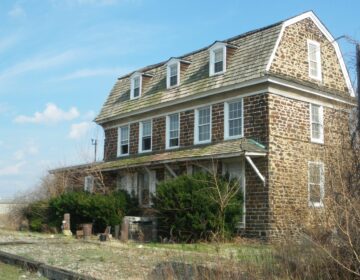Looking between the N.J. report card lines
When is a School Report Card not just a School Report Card? When it’s a political instrument.
This is commentary from education blogger Laura Waters of NJ Left Behind
When is a School Report Card not just a School Report Card? When it’s a political instrument.
After all, if an administration’s agenda includes an education reform plank, a Department of Education might be inclined to gesture towards failing schools with bleak graduation rates. Or if an administration’s agenda included new austerity measures, there might be a certain benefit in drawing attention to high costs per pupil.
On the other hand, if a lobbyist’s agenda includes preservation of the current public education system, one might be inclined to spotlight the high achievement rates of local public schools, advocate for current funding levels in order to protect achievement and promote equity, and maybe even question the veracity of the newly-released database.
Is it possible, then, for a purist to glean a clear-eyed view of the fiscal and academic health of N.J.’s public schools amidst all the political weeds?
Sort of.
Last week the New Jersey Department of Education released the 2010-2011 School Report Cards, which provide a district-by-district database of student achievement, school spending, technology access, student suspension rates, staff salaries, and other sundries.
Two fields elicited much rhetoric: high school graduation rates and annual costs per pupil.
N.J.’s new method of calculating graduation rates — which complies with new Federal regulations — is nine points lower than last year. Who can argue with accuracy? But there’s also a political angle. For those of the education reform persuasion, lower graduation rates are a good argument for changes like school choice and tenure reform.
Witness, then, Education Commissioner Chris Cerf’s statement: ”As we look at these new graduation rates across the state, the question we must continue to ask ourselves is not only whether students are graduating from high school, but whether we are truly preparing them to be ready for the demands of the 21st century.”
According to these new report cards, our graduation rate has fallen by nine points, to 82%. While some districts still boast sky-high rates — 99.39% in Robbinsville (Mercer County), almost 100% in Bergen County’s magnet schools, 97% in Raritan High School (Monmouth) — other districts have very low rates.
Asbury Park graduates 59.5% of its students, Camden High graduates 56.9%, and Trenton Central High is at the bottom of the barrel with 54.8%. New Jersey’s annual cost per student is even more enmeshed in political weeds. After all, the rhetoric on those who strive to curtail school costs is going to be different than the rhetoric of those who strive to maintain them.
Witness, then, Education Law Center’s Executive Director David Sciarra, long-time advocate for extra funding for poor urban students: ”The Christie Administration will do just about anything to promote the myth we spend too much to educate our children.” According to these latest Report Cards, N.J. spends $17,469 per year per student, down about $200 since last year, and certainly putting us in the head of the pack nationally. (Typically, New York State and N.J. toggle back and forth for the honor of garnering top spender status.)
But that average hardly tells the whole story.
The DOE offers two different cost per pupil numbers. “Budgetary Cost Per Pupil” includes classroom instruction, support services, administrative costs, food, plant operations: the usual. “Total Cost Per Pupil” adds in out-of-district tuition, and preschool costs, transportation, and judgments against districts. So, for instance, Atlantic City Public Schools has a Budgetary Cost Per Pupil of $18,237 but a Total Cost Per Pupil of $25,490.
The range of spending is considerable.
At the very low end, there’s Buena Regional (also in Atlantic County), which spends only $12,105 per pupil, although when other overhead is added in the number swells to $17,275. Then there’s that favorite political football, Asbury Park, with a whopping Budgetary Cost Per Pupil of $25,095. (Total costs per pupil are slightly higher, at $29,095).
So where does this all leave the clear-eyed purist? One tip: bring your weeder and herbicide.
Laura Waters is president of the Lawrence Township School Board in Mercer County. She also writes about New Jersey’s public education on her blog NJ Left Behind. Follow her on Twitter @NJleftbehind.
WHYY is your source for fact-based, in-depth journalism and information. As a nonprofit organization, we rely on financial support from readers like you. Please give today.




